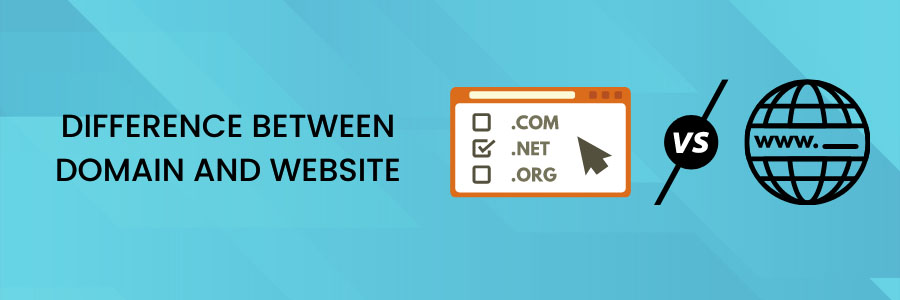Difference Between Domain and Website
Distinction between URL, Domain and Website
It can be hard to parse all of the Internet terms when you’re ready to construct a website for your company. You’ve probably got a lot of questions about where to start. What are the differences between web servers and URLs? What is the distinction between a domain and website? What does it mean for a website to “live” online and where does it do so?
Learn the key differences between domain names, URLs, and websites to begin establishing the groundwork for bringing your concept to life.
What is a Website?
A website is a collection of web pages that reside on a certain domain name on the world wide web (also known as the Internet).
Your website is more like a live organism. The relationship between your site files, your web host, and your domain name determines this. Your website will not appear if any of these three are broken.
Web pages, which are documents produced in a variety of web languages, mainly HTML, CSS, and some type of JavaScript, will make up the majority of your website. These serve as instructions for the web browser on how to display your website.
A website serves as a platform for consumers to more simply and efficiently find what they are looking for. To display effectively in a web browser, websites must follow some common code and structural requirements. Their primary goal is to convert visitors into prospects by offering high-quality material on their website, which improves customer connection.
What is a Domain?
A domain name is an online address that uniquely identifies your website. Consider a domain name to be the road map to your website. When consumers type your site’s name into a browser’s address bar, the browser can figure out where it’s located. The words that follow “www” make up a domain name. Every page on a site with several pages has its own subdomain. Consider the following scenario:
- Main site domain: f60host.com
- Subdomain for the blog: f60host.com/support/blog
- Subdomain for an individual blog post: f60host.com/support/7-best-time-saving-g-suite-tips
Domain serves as a simple way for users to gain access to the website. Domain names are created by complying with the Domain Name System’s rules, constraints, and processes (DNS). The domain name is used to represent the full collection of internet resources, including computers, networks, and services, as well as a text-based label that is easier to recall.
What is a URL?
A Uniform Resource Locator (URL), commonly known as a web address, is a reference to an online resource that identifies its position on a computer network as well as a retrieval method. Although many people use the phrases interchangeably, a URL is a kind of Uniform Resource Identifier (URI). URLs occur most commonly to reference web pages (HTTP) but are also used for file transfer (FTP), email (mailto), database access (JDBC), and many other applications.
On the surface, websites appear to be simple, yet they are really made up of data and file directories. All of these files are stored and processed on web servers by a web host.
Many website construction systems sell domains and web hosting, making it simple for novices to launch a website rapidly. Otherwise, self-hosting (finding your own web hosting service) is an option.
Perfect examples include WordPress.com and WordPress.org. WordPress.com is a blogging platform that also offers hosting and website layouts. WordPress.org is a free website development platform that you may use to create your own website. However, to get your finished website online, you’ll need to pay for a separate host. Some of the best hosting platforms are F60host.com. F60 Host has one of the best domains, Google Workspace plan, SSL certificate, and WordPress hosting, in India.
Conclusion
- A website is a collection of web pages that are connected together.
- The three components of any website are site files, domain name, and web host.
- A domain is a more user-friendly version of an IP address that allows people to search for websites on the internet.
- Every domain has three components: a protocol, a domain name, and an extension. Subdomains are included in certain domains to make navigation easier.
- Registering a domain name, finding a hosting provider, and building a website with specialized tools are all steps in the process of launching a website.

